SEC Traffic (Priority)
***** EMa ARES Leadership Action Plan *****
***** Please initiate at approximately 1400 today *****
Hello to all….
 The present forecast is a nominal solution, even though the present consolidated prediction has the storm hitting land in the Carolinas and moving well inland away from us. Still, a run straight at us has not been ruled out as of yet, and a strike east of NYC (which is not a big change of direction from where it is now), could bring very undesirable effects into our area. Please don’t let down from your vigilance or preparations for this storm until Rob or I give an all clear.
The present forecast is a nominal solution, even though the present consolidated prediction has the storm hitting land in the Carolinas and moving well inland away from us. Still, a run straight at us has not been ruled out as of yet, and a strike east of NYC (which is not a big change of direction from where it is now), could bring very undesirable effects into our area. Please don’t let down from your vigilance or preparations for this storm until Rob or I give an all clear.
Here is the action plan. Thanks to Frank WQ1O for putting pen to paper on this. [Comments within brackets are that of the author of this message for clarity and continuity]. Please press on the “read more” link.
(USN COAMPS Model Valid 12Z Thurs 18 Sep 03)We had some prelim items before entering 72 hours, we are virtually past that now, [but it was] mostly a check of leadership availability, including ECs [and key] ARES members. Note: this is just availability, not a standby or alert
We are almost near the 72 hour trigger, [which is slated to] start at 9-15….1400 local. [We]need to begin with coordination emails sent by Rob to Skywarn list..general [Done]. DECs should begin situational awareness updates mostly for information purposes…leading to preparedness. No mention of assignments or deployment, as it would raise premature wantings to step too far ahead..DECs need to contact their ECs or any other ARES member to see if any requests have come from EM directors or ANY served agency member that compression of timeline can occur if speed estimates change comments on 72 hour preps? [I] forgot to mention that the chain of info works both ways, [as] you need to make sure that requests and info goes both up and down the chain to ensure uniform knowledge.
At 48hours you should begin your calldown to your ECs and down to the members [and] log any discrepancies or issues. MAKE IMMEDIATE preps to secure your own property! You can’t help anyone if your worried about the thing you did not get done for personal readiness! Coordination messages should continue from skywarn to their general list. The skywarn messages are CRITICAL to decision making.
We will go on to 36 hours. [You should] begin the] second call down to ARES EC and the membership lists. You may find that people that were not available in the first call down are now available. The opposite is also true. In a drama like this…plans can change quickly. You need to have as close to real time avail. lists as possible. It also gives those vital #s that Mike needs for Situation reporting. This is the next step, [to] initiate comms with other DECs and the SEC. If we don’t, we are likely to miss something major in the process. [We] also [want to] stress the EC-DEC up and down chain of reporting on served agency requests and possible sources of otherwise unknown info from EMs..
24 hour preparations. Initiate a FULL statue [status] report from the DEC level to Mike (SEC). [The] SEC MUST know what weaknesses exist in order to make decisions. Send as many as you feel the need to do. Often is BETTER! Also..if time permits, a meeting of leadership can be called on IM, in person, or via conference call.
For EC’s and EMA reps to ARES: Please report your status ASAP to your DEC upon reading this.
For DEC’s: Please forward a preliminary report upon receipt of this notice.
IMPORTANT: Future updates will appear first on our website, then by email if time and conditions allow.
FOR ALL: Please complete home preparations now, and review contact and mobilization policies posted on our website (listed below by my name).
I look forward to working with you in the following days. Best to you and your families. 73,
s/Michael P. Neilsen
Michael P. Neilsen, W1MPN, EMa SEC
978.562.5662 Voice
978.389.0558 FAX/Secondary Voice
http://ares.ema.arrl.org
w1mpn@ema.ares.org
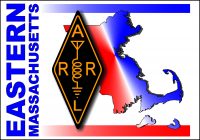

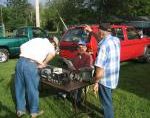 Tim Smith, N1TI writes:
Tim Smith, N1TI writes: In view of the possibility that the U.S. East Coast could be impacted by Hurricane Isabel sometime this week, please indicate your availability to help with your DEC, and/or SKYWARN coordinator, KD1CY as soon as possible. Please be sure to update those officials with your phone and email changes since the last time you spoke.
In view of the possibility that the U.S. East Coast could be impacted by Hurricane Isabel sometime this week, please indicate your availability to help with your DEC, and/or SKYWARN coordinator, KD1CY as soon as possible. Please be sure to update those officials with your phone and email changes since the last time you spoke.  Bob Salow, WA1IDA writes:
Bob Salow, WA1IDA writes: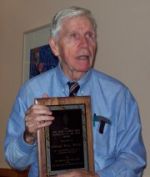 Ed Weiss, W1NXC received the prestigious Herb S. Brier Instructor of the Year Award this past Thursday night at the Framingham ARA’s “Night Out” Dinner at the Pacific Buffet in Framingham. Presenting the award and gift certificate were ARRL New England Division Director Tom Frenaye, K1KI and Eastern Massachusetts Section Manager Phil Temples, K9HI. Many of the club members in attendance stood up and gave testimony to Ed’s ceaseless and unwavering commitment to volunteer teaching of Amateur Radio material spanning many years.
Ed Weiss, W1NXC received the prestigious Herb S. Brier Instructor of the Year Award this past Thursday night at the Framingham ARA’s “Night Out” Dinner at the Pacific Buffet in Framingham. Presenting the award and gift certificate were ARRL New England Division Director Tom Frenaye, K1KI and Eastern Massachusetts Section Manager Phil Temples, K9HI. Many of the club members in attendance stood up and gave testimony to Ed’s ceaseless and unwavering commitment to volunteer teaching of Amateur Radio material spanning many years.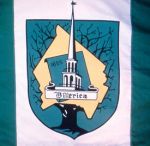 Ken, WO1N writes:
Ken, WO1N writes: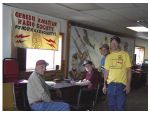 Doing its part to spread public awareness about Amateur Radio, the Genesis ARS staffed a display table and demonstration station at Plymouth’s “Airport Fun Days” on August 31. The exhibit featured a colorful banner with the club’s name. GARS members report that they gained valuable insight into how to “do it better in the future.”
Doing its part to spread public awareness about Amateur Radio, the Genesis ARS staffed a display table and demonstration station at Plymouth’s “Airport Fun Days” on August 31. The exhibit featured a colorful banner with the club’s name. GARS members report that they gained valuable insight into how to “do it better in the future.” Eastern Massachusetts Section Emergency Coordinator Mike Neilsen, W1MPN recommends that amateurs contact their DECs, update their contact information and indicate their availability should Hurricane Isabel impact our area. See
Eastern Massachusetts Section Emergency Coordinator Mike Neilsen, W1MPN recommends that amateurs contact their DECs, update their contact information and indicate their availability should Hurricane Isabel impact our area. See 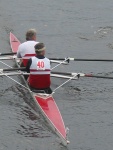
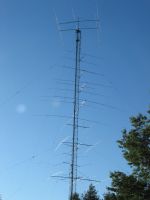
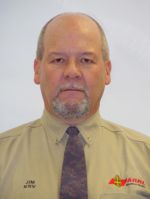 Jim Duarte, N1IV, has been nominated for the ARRL’s prestigious Philip J. McGan Memorial Silver Antenna Award. The McGan award is given annually to the individual who demonstrates volunteer public relations success on behalf of Amateur Radio at the local, state or national level, and will live up to the high standard of achievement exemplified by the late Philip J. McGan.
Jim Duarte, N1IV, has been nominated for the ARRL’s prestigious Philip J. McGan Memorial Silver Antenna Award. The McGan award is given annually to the individual who demonstrates volunteer public relations success on behalf of Amateur Radio at the local, state or national level, and will live up to the high standard of achievement exemplified by the late Philip J. McGan. Bob Salow, WA1IDA writes:
Bob Salow, WA1IDA writes: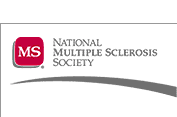 Rick Cantin, AA1TI wrote:
Rick Cantin, AA1TI wrote: Pi, K1RV wrote:
Pi, K1RV wrote: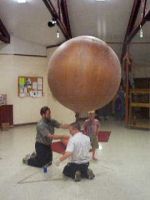 Ted T. Wright tedwright@csi.com wrote:
Ted T. Wright tedwright@csi.com wrote: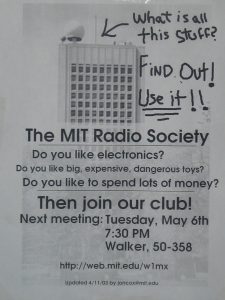
 Project Bread is again sponsoring the Ride for Hunger on Sunday, September 14. This ride raises funds to support feeding programs all across the Commonwealth. With the high level of unemployment, our efforts are needed more than ever. The Crocker Public Service Group was a vital part of raising over $250,000 last year. Our team provides crucial safety links to the 1,000 cyclists in this tour.
Project Bread is again sponsoring the Ride for Hunger on Sunday, September 14. This ride raises funds to support feeding programs all across the Commonwealth. With the high level of unemployment, our efforts are needed more than ever. The Crocker Public Service Group was a vital part of raising over $250,000 last year. Our team provides crucial safety links to the 1,000 cyclists in this tour. 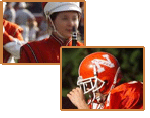 Alexander Rullo, KB1JLU wrote:
Alexander Rullo, KB1JLU wrote: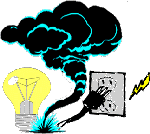 ARRL’s national web site carried summaries of Amateur Radio operations from the affected areas in the Midwest, New York and New England in the wake of yesterday’s major blackout. The following excerpt pertains to our section. It was based on a timely submission by EMa Public Information Coordinator Jim Duarte, N1IV:
ARRL’s national web site carried summaries of Amateur Radio operations from the affected areas in the Midwest, New York and New England in the wake of yesterday’s major blackout. The following excerpt pertains to our section. It was based on a timely submission by EMa Public Information Coordinator Jim Duarte, N1IV: